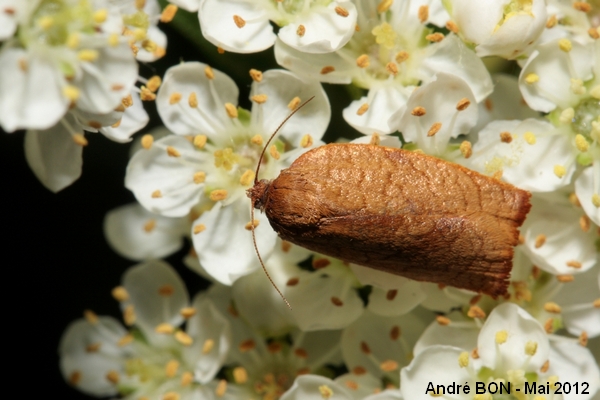
| Carnation Tortrix (Cacoecimorpha pronubana (Hübner, 1799)) |

|
|
Scientific name: Cacoecimorpha pronubana (Hübner, 1799) Common name: Carnation Tortrix French name: Tordeuse méditerranéenne de l'œillet Order: Lepidoptera Suborder: Microlepidoptera Family: Tortricidae Subfamily: Tortricinae Wingspan: 18–22 mm for females, 15–17 mm for males. Biotope: Parks and gardens but also inside greenhouses and outside fields where ornamental plants are cultivated. The damages to plantations may be important. Geographic area: Originated from the Mediterranean Basin Cacoecimorpha pronubana is now observed in Europe, Asia Minor, North Africa, South Africa and North America. Flight time: May to June and then August to September in the northern part of the range. Number of generations : Up to 4 in warm regions, only 2 in the northern part of the range. Caterpillar: Olive green to bright green, paler on the under side. The head is greenish yellow or yellowish brown. It is spotted with dark brown. Host plant: Many shrubs, deciduous trees and herbaceous plants. |
The Carnation Tortrix species shows a sexual dimorphism. Females' fore wings are a pale beige-brown colour with a dark brown reticulation. You can sometimes see a slightly darker oblique broad median stripe and a dark patch close to the inner edge on basal half. Males' fore wings are orange brown with reddish brown and blackish marks drawing a broad oblique median stripe. These darker marks also cover the submarginal area and widen near the costal edge. The hind wings are orange. |
| [To know more about the Carnation Tortrix] [Top] |

|
The pale beige-brown colour with dark brown reticulation indicates one female. The oblique median stripe is not easily visible, however it can be slightly distinguished close to the inner edge and close to the costal edge. |